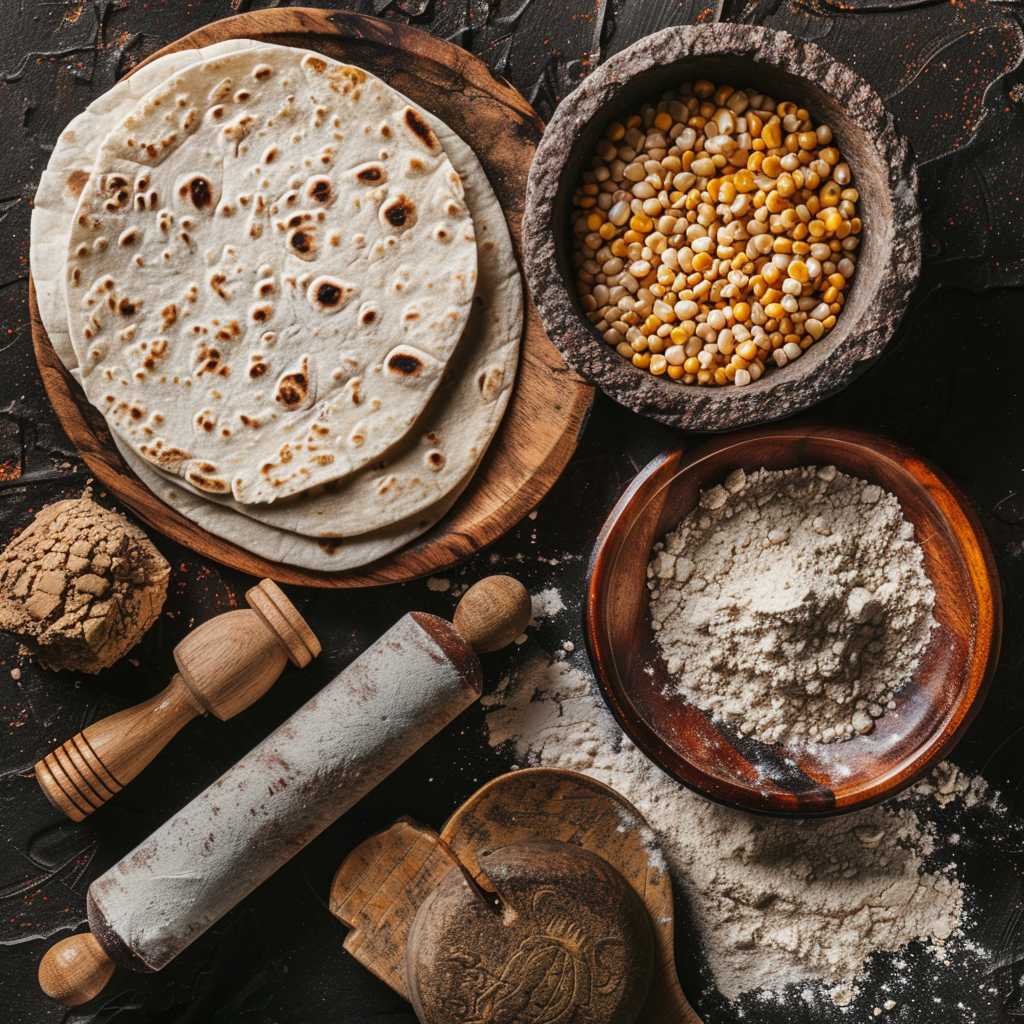The Versatile World of Tortillas: A Staple of Global Cuisines
Tortillas, the ubiquitous culinary staple, serve as the edible canvas for a plethora of world cuisines. Their origins trace back to Mesoamerica and they have since transcended cultural boundaries to become an integral part of mealtime in countless countries. Made from corn or wheat, versatile in use—tortillas can be baked, fried, or steamed, providing an ideal base for a variety of ingredients and dishes.
Origins and Historical Significance of Tortillas
While tortillas are most commonly associated with Mexican cuisine, their historical roots reveal a much broader tapestry linking them to indigenous civilizations like the Maya and Aztec. These flatbreads were fundamental to ancient Mesoamerican diet, consisting mainly of maize which was ground into masa, a dough used to make tortillas.
Preparation Process of Traditional Tortillas
Although modern manufacturing has streamlined tortilla production, traditional methods still persist. Preparing authentic tortillas involves the nixtamalization process where corn is soaked and cooked in an alkaline solution, typically limewater, then hulled. The resulting nixtamal is ground into masa.
Corn vs. Wheat Tortillas: A Comparative Glance
Corn Tortillas
Made from masa harina (flour) derived from maize, corn tortillas are packed with flavor and possess a distinctive texture that holds up well against hearty fillings. They are also naturally gluten-free.
Wheat Tortillas
Also referred to as flour tortillas and mainly popular in the northern Mexican states and within the southwestern United States, these tortillas have a softer texture due to their gluten content and are often used for dishes such as burritos or wraps.
Nutritional Profile: Health Aspects of Eating Tortillas
Tortillas offer various nutritional benefits depending on their primary ingredient. Corn tortillas are high in fiber and contain valuable phytonutrients, whereas their wheat counterparts provide protein but may also contain more calories and fat especially when lard or shortening is added to the dough.
Global Influence and Adaptations
Evident in kitchens around the world, tortilla’s adaptable nature has led to global variations ranging from Ethiopian injera to Indian roti. Within these seemingly diverse foods lies the elemental tortilla heritage—simple flatbreads acting as vehicles for regional flavors.
Tortilla in Modern Cuisine: More than Just Mexican Dishes
Perhaps one of the most renowned adaptions of the tortilla is its use in Tex-Mex cuisine, typified particularly by dishes such as fajitas, quesadillas, and enchiladas. These have introduced worldwide audiences to the concept of comfort food wrapped in or cradled by a tortilla.
The popularity of international street food has also been catalyzed by the flexibility of tortillas which act as an element that bridges traditional street food with gourmet ingredients for a fusion experience.
Notes:
*Image Description:*
An assortment of freshly made tortillas positioned amidst ingredients such as corn kernels, a bowl of flour, a rolling pin, and a traditional stone grinder known as a metate. The image highlights both the preparation process and the cultural significance of this staple food item.
